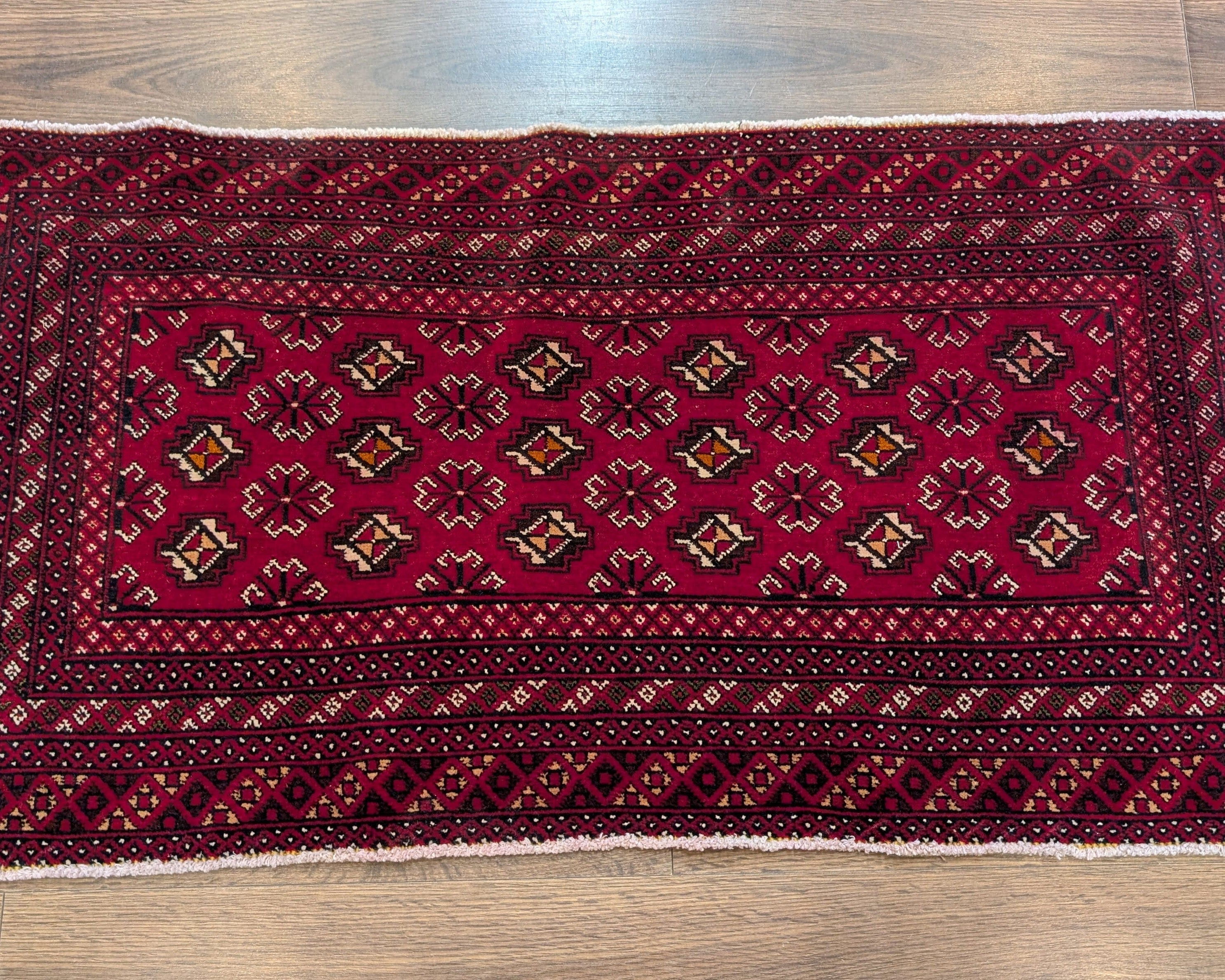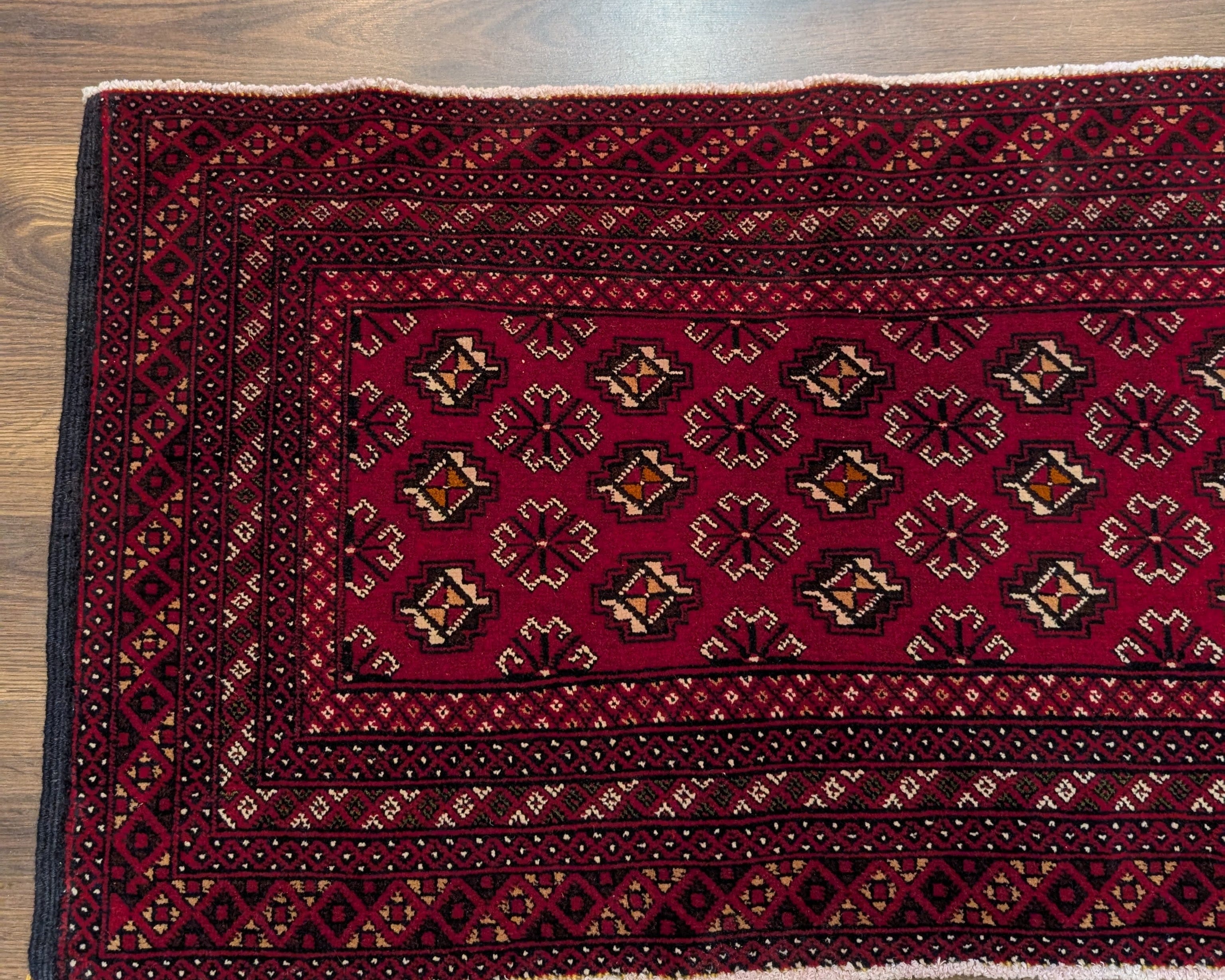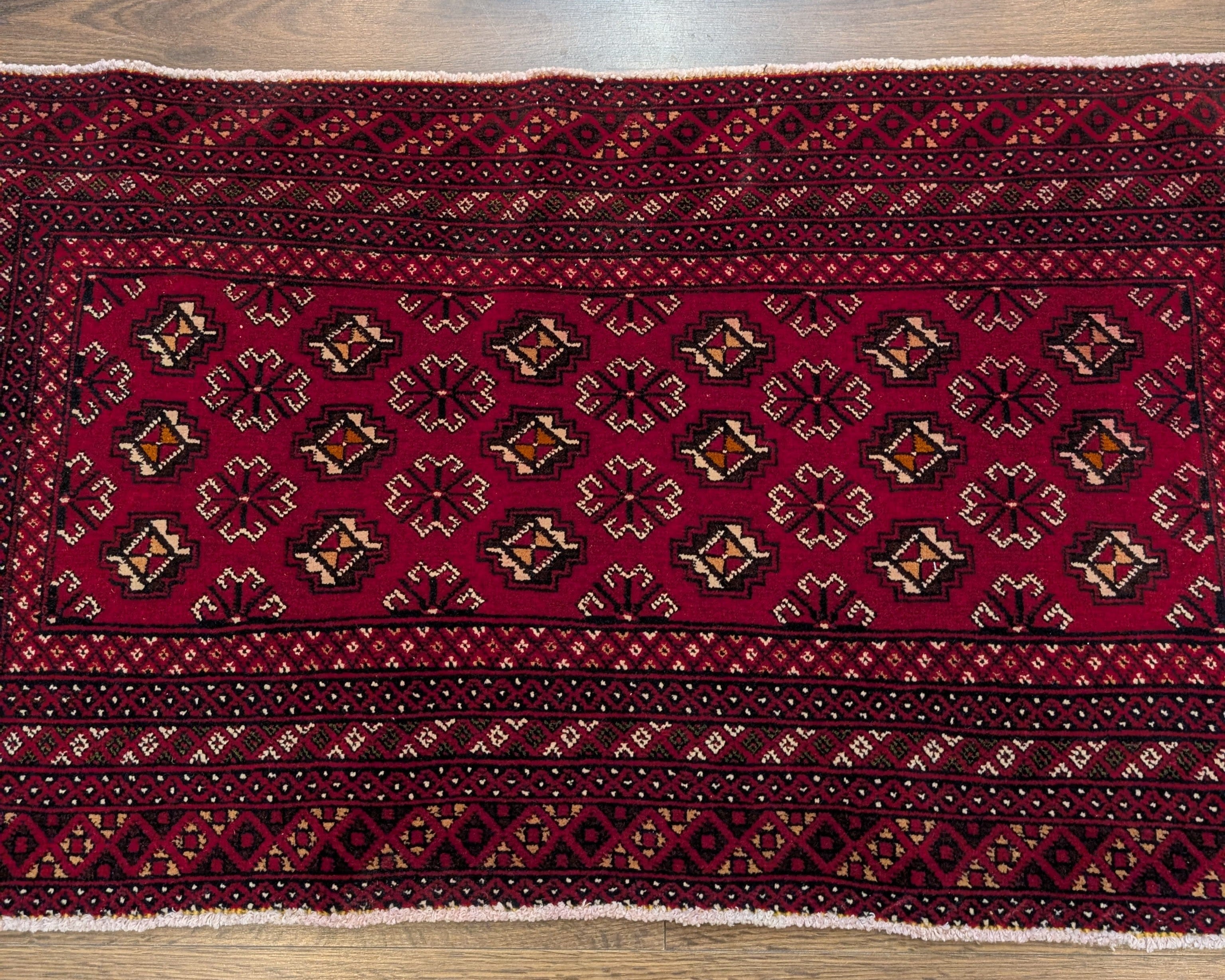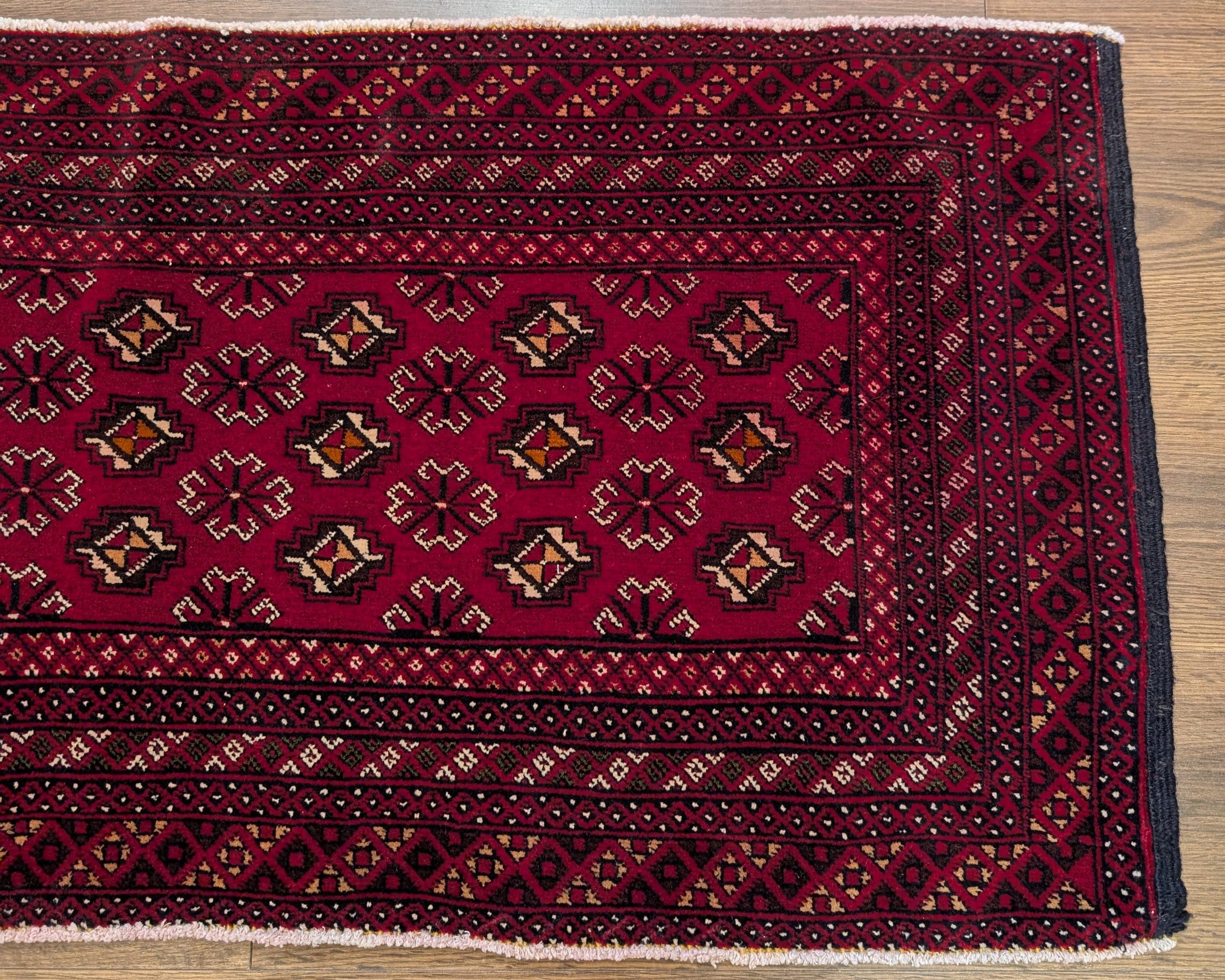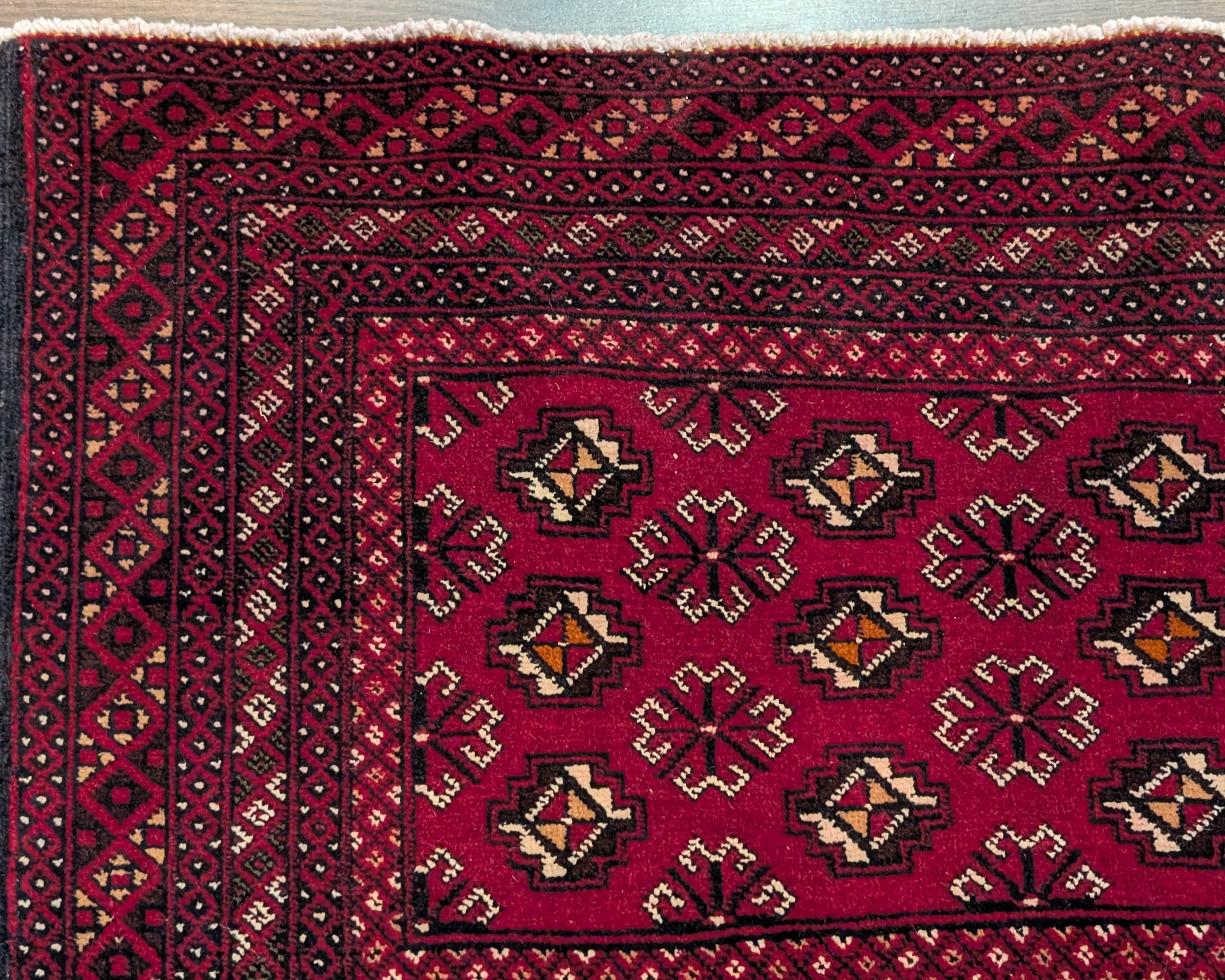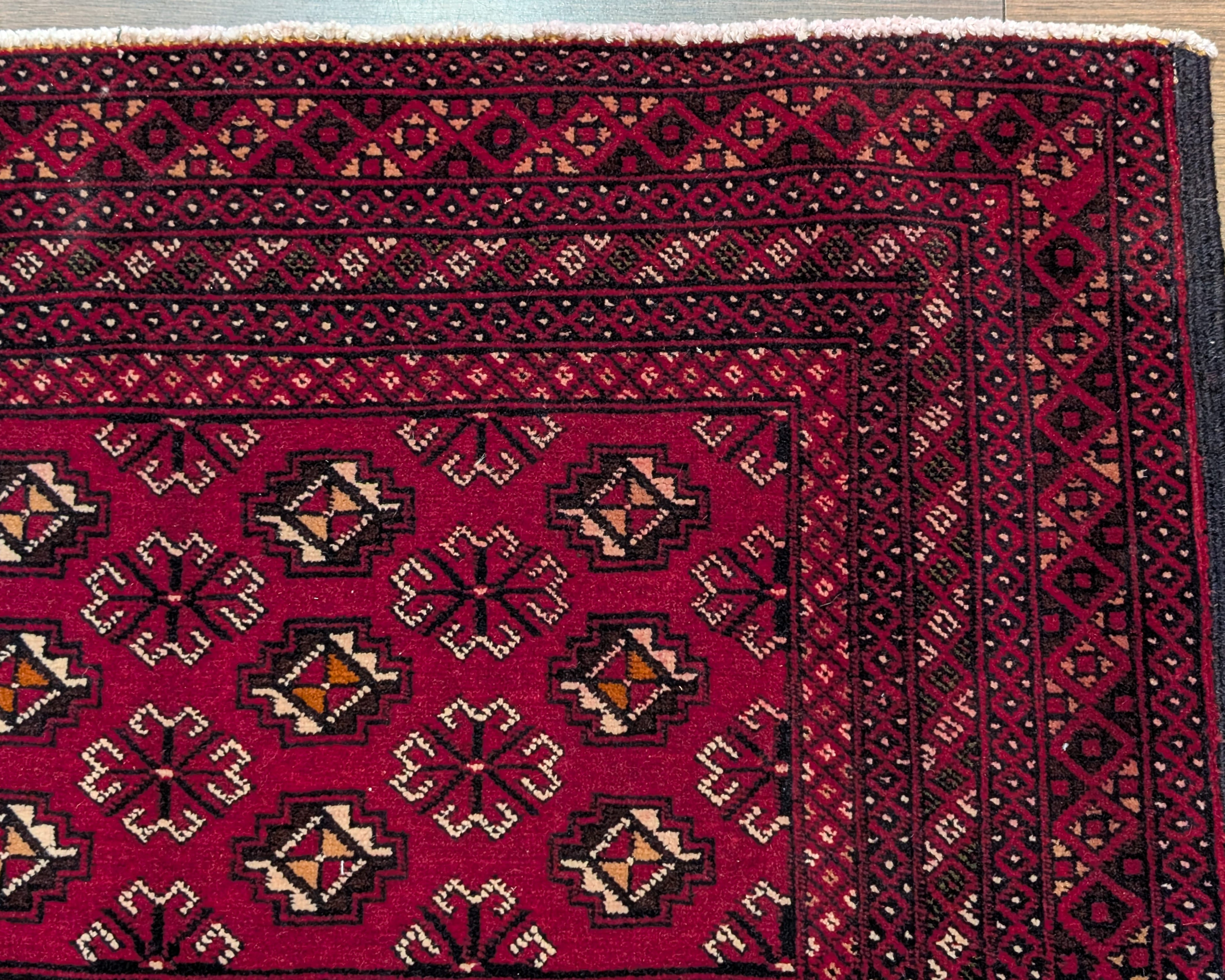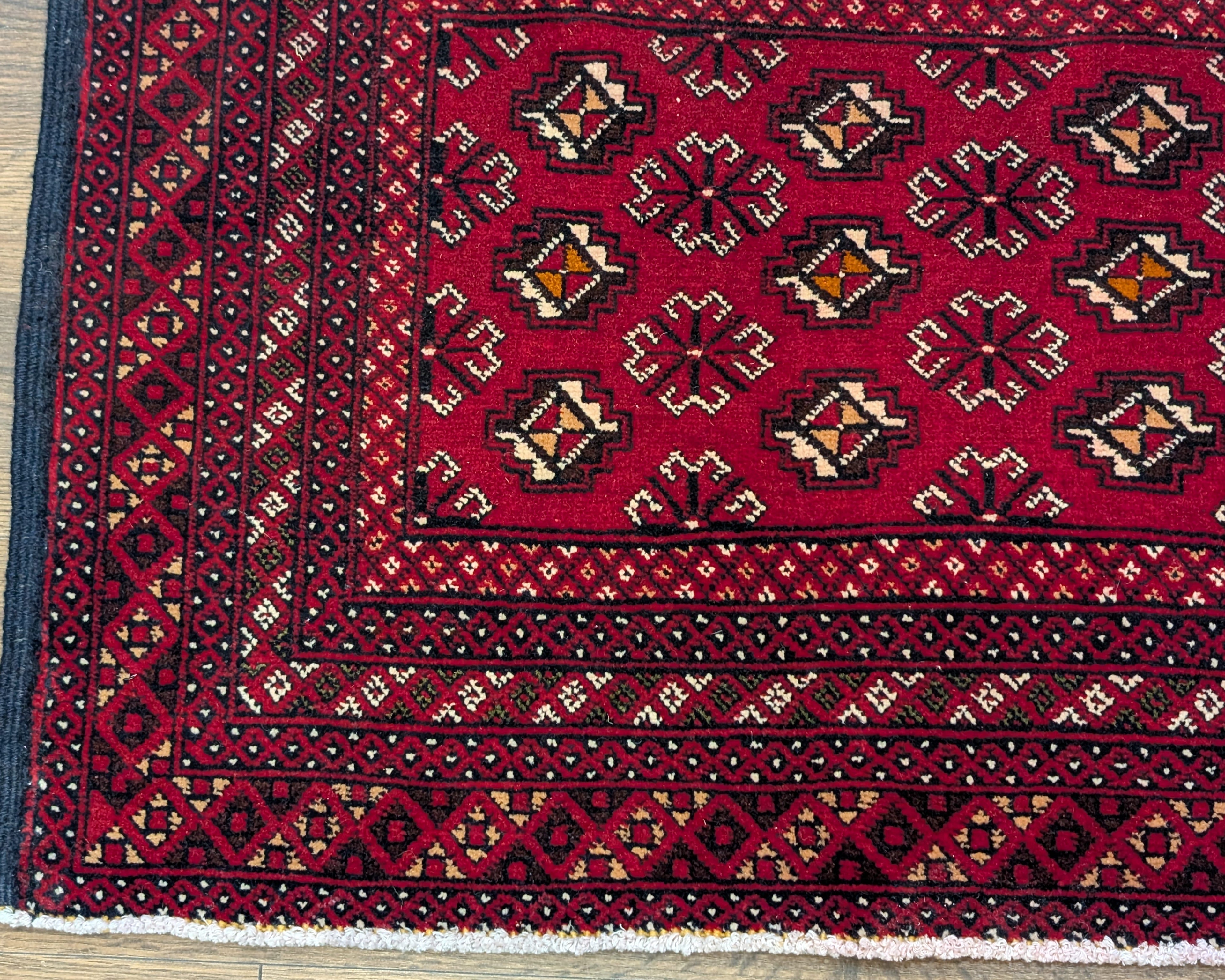The Nomadic Weaving Tradition
Turkoman rugs come from the nomadic tribes of Central Asia, including the Tekke, Yomud, Ersari, Salor, and Saryk peoples. These tribes lived as herders and traders, moving across the vast steppes with their flocks. Rug weaving was essential to their way of life - carpets served as floor coverings, tent decorations, and valuable trade goods.
Each tribe developed its own specific patterns and weaving styles, passed down through generations of women. The designs weren't just decorative - they identified which tribe made the rug and often carried family or clan significance. This tradition created a rich variety of styles within the overall Turkoman group.
The nomadic lifestyle required rugs that were both beautiful and extremely durable. Turkoman weavers became masters at creating carpets that could withstand constant use, packing, and transport while maintaining their beauty for decades.
Cultural Significance and UNESCO Recognition
Traditional Turkmen carpet weaving holds extraordinary cultural importance and is recognized by UNESCO as an Intangible Cultural Heritage of Humanity. This recognition highlights how these weaving traditions represent not just beautiful craftsmanship, but living cultural practices that connect modern weavers to their ancestral heritage.
The art of Turkoman carpet making encompasses much more than just creating floor coverings. It includes the entire process from sheep breeding and wool preparation to natural dyeing and the intricate knotting techniques passed down through generations. The patterns themselves serve as a form of cultural communication, preserving tribal identity and family history through textile art.
This UNESCO designation helps protect and promote these traditional skills, ensuring that future generations can continue this remarkable craft that has shaped Central Asian culture for over a thousand years.
The Famous Gul Patterns
The most recognizable feature of Turkoman rugs is the gul - octagonal medallions that repeat across the carpet in organized rows. Each tribe had its own version of the gul, making it possible to identify where a rug came from just by looking at the pattern. The Tekke gul is probably the most famous, featuring a quartered design with hooked elements.
These guls aren't random decorations. They often represent tribal symbols, family crests, or spiritual beliefs. The way they're arranged and the specific details within each gul tell stories about the weaver's heritage and identity.
Between the main guls, smaller secondary motifs fill the spaces. These might include stars, diamonds, or stylized animals. The borders usually feature geometric patterns that complement the main design while creating a finished, balanced appearance.
Rich Colors and Materials
Turkoman rugs are famous for their deep red backgrounds, ranging from dark burgundy to bright cherry red. This red comes from madder root, a natural dye that creates lasting, beautiful color. The red background is usually accented with navy blue, white, yellow, and sometimes green or brown.
The wool used in Turkoman rugs comes from high-quality sheep, known for producing strong, lustrous fiber. This wool is hand-spun and often has a slight sheen that gives the rugs their characteristic glow. The quality of the wool, combined with skilled dyeing, creates carpets that actually improve in appearance as they age.
Most Turkoman rugs use the Persian knot, tied very tightly to create dense, durable construction. The fine knotting allows for precise geometric patterns while ensuring the rug will last for generations of use.
Different Tribal Styles and Regional Variations
Tekke rugs are probably the most common and feature the classic quartered gul on deep red backgrounds. These tend to be finely woven with consistent, precise patterns. Yomud rugs often use different gul designs and sometimes include more varied colors, including beautiful purples and browns.
Ersari rugs tend to be larger and might feature different motifs altogether, sometimes including tree-of-life patterns or large medallions instead of traditional guls. Salor rugs are rare and highly prized, known for their exceptionally fine weaving and distinctive gul designs.
Afghan Turkoman rugs represent a continuation of these traditions by tribes that settled in northern Afghanistan. Pakistani Turkoman rugs are produced primarily in the western regions near the Afghan border, where Turkoman communities have maintained their weaving traditions. These Pakistani pieces often feature traditional gul patterns with excellent craftsmanship, sometimes using slightly adapted color palettes while preserving the authentic tribal character that defines the style.
Turkoman Rugs Today
Modern Turkoman-style rugs continue this ancient tradition, often made by descendants of the original tribes or by weavers who have learned these techniques. Contemporary production centers in Pakistan have become particularly important, where skilled weavers create high-quality pieces that honor traditional patterns and techniques.
While some contemporary pieces adapt the patterns for modern tastes, the best examples maintain the authentic character and quality that make these rugs special. The geometric patterns and rich colors of Turkoman rugs work surprisingly well in contemporary interiors, providing warmth and character that complements both traditional and modern furniture.
FAQ Section
What makes Turkoman rugs different from Persian rugs?
Turkoman rugs have a much more geometric, tribal character compared to the flowing, often floral patterns of Persian rugs. They typically feature repeating gul medallions on deep red backgrounds, while Persian rugs use more varied colors and curvilinear designs. Turkoman rugs were made by nomadic tribes for practical use, so they tend to be more durable and have a stronger, more rustic character than court-made Persian pieces.
What is the difference between a Persian Turkoman rug and other Turkoman rugs?
Persian Turkoman rugs are woven in Iran, often in the northeastern regions where Turkoman tribes settled. These tend to have slightly finer weaving and may use higher knot counts than traditional nomadic pieces. The wool quality is often excellent, and the colors might be more refined or varied. However, they maintain the classic gul patterns and red backgrounds. Other Turkoman rugs from Afghanistan or Pakistan may have a more rustic, tribal character and sometimes use different wool sources, but all authentic Turkoman rugs share the same basic design principles and cultural heritage.
How can I tell which tribe made a Turkoman rug?
Each tribe had its own specific gul design and weaving characteristics. Tekke rugs feature quartered guls with hooked elements, while Yomud guls are different in shape and internal pattern. The colors, border designs, and overall weaving style also vary between tribes. Learning to recognize these differences takes practice, but the gul pattern is usually the best starting point for identification.
Why is Turkoman weaving recognized by UNESCO?
Traditional Turkmen carpet weaving is recognized by UNESCO as an Intangible Cultural Heritage because it represents a living tradition that has been passed down for over 1,000 years. The weaving encompasses not just rug making, but an entire cultural system including sheep breeding, natural dyeing, and storytelling through patterns. Each design carries cultural meaning and tribal identity. This recognition helps preserve these traditional skills and cultural knowledge for future generations.
Why are Turkoman rugs mostly red?
The deep red color comes from madder root, a natural dye that was readily available to the nomadic tribes and created beautiful, lasting color. Red also had cultural significance - it represented strength, vitality, and good fortune. While other colors appear as accents, the red background became the signature of Turkoman weaving and helps unify the various tribal styles under one tradition.
How do I care for a Turkoman rug?
Turkoman rugs are relatively easy to care for because of their durable construction. Regular vacuuming keeps them clean, and the geometric patterns help disguise normal wear. The madder-dyed red colors are generally quite stable and won't fade easily. Professional cleaning every few years will help maintain their appearance. The high-quality wool actually improves with age, developing a beautiful patina that adds to the rug's character.

